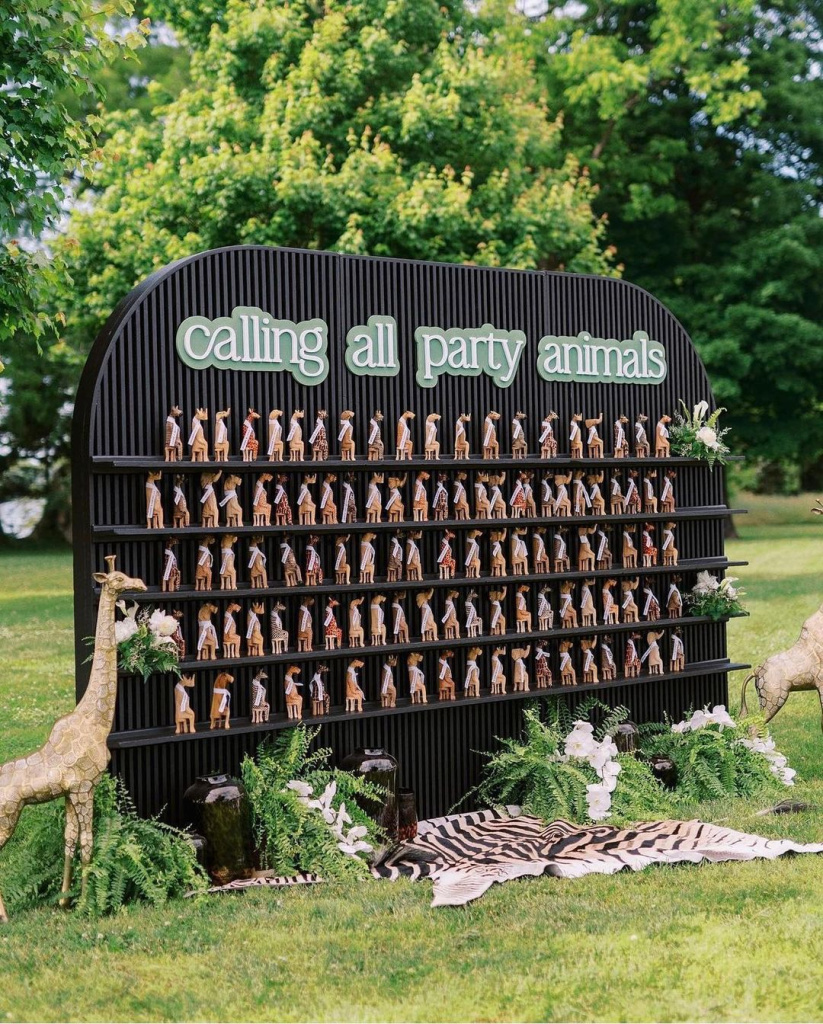Oh, the wedding seating chart – one of the final boss battles of wedding planning. You’ve got a limited number of tables, a guest list full of clashing personalities and at least one person who insists they don’t care where they sit (but will absolutely complain if they don’t like their spot). But don’t panic! This doesn’t have to be a stressful spreadsheet nightmare.
With a little strategy and some creative thinking, you can seat your guests in a way that makes everyone happy – or at least keeps the peace for one night. Let’s make this easier, shall we?

Figure out your layout first
Before you even think about who’s sitting where, start with the basics. What kind of tables are you working with? Your wedding venue will play a big role in this, but you have a lot of options. Classic round tables? Long banquet-style seating? A mix of both? Or maybe you love the idea of something unexpected – serpentine tables, a U-shaped setup or even an organic, free-flowing layout. Once you lock that in, you’ll know how many guests fit per table, which makes the rest of the wedding seating chart process less of a guessing game.
Forget the obvious groups
Sure, you could just sit people with their usual friend circles, but where’s the magic in that? Weddings are about bringing people together so shake things up! Do you have an uncle who tells the best travel stories? Pair him with your friend who’s always planning their next trip. Have two cousins who’ve never met, but both love ’90s R&B? Instant bonding over one of the best eras of music. It’s all about crafting tables that will actually enjoy each other’s company – not just survive the meal.
VIP placement: It matters!
Your parents, grandparents and bridal party deserve prime spots, but think about where they’ll be happiest. Parents might want a front-row seat to speeches but do they really want to be next to the DJ booth when things get loud?
If your bridal party has dates, do they want to be at a separate table or sit with their plus-ones? Oh, and if family drama is in the mix (divorces, rival siblings, feuding aunts), separate but equally good seats keep the peace. Strategic spacing is your best friend.
Think about energy levels
Sure, you want your guests to feel comfortable but let’s not accidentally create a table of people who sit in silence, scrolling on their phones. Think about energy levels when seating guests because mixing social butterflies with a few introverts can actually be the magic formula for a lively yet balanced table. The talkative ones draw out the quiet ones and before you know it, your shy cousin is laughing it up with your partner’s extroverted college friend. It’s all about the right blend!
Get visual – your brain will thank you
Trying to organize a wedding seating chart mentally is a guaranteed headache. Go visual! Whether it’s sticky notes on the wall, a good old-fashioned whiteboard or a fancy digital tool, seeing it laid out will save you so much time. Plus, moving things around is way easier when it’s just a quick drag-and-drop instead of redoing an entire list every time you second-guess yourself.
Have a backup plan
Trust us, you will have last-minute changes to your wedding seating chart. Someone will cancel. Someone else will bring an uninvited plus-one. Someone will suddenly “need” to sit next to someone different. The best thing you can do? Leave a little flexibility by having a couple of open seats here and there to make adjustments much easier.
Make it easy for guests to find their spot
Whew! Your wedding seating chart is done! Now, you have to make sure people can actually find their seat. Alphabetical lists are way easier to navigate than table-by-table breakdowns (no one wants to squint at a massive board for 10 minutes). If you want to get creative, go for a fun display – a vintage mirror with handwritten names, a themed escort card table or even a cute personalized touch that fits your wedding vibe.









Leave a Reply